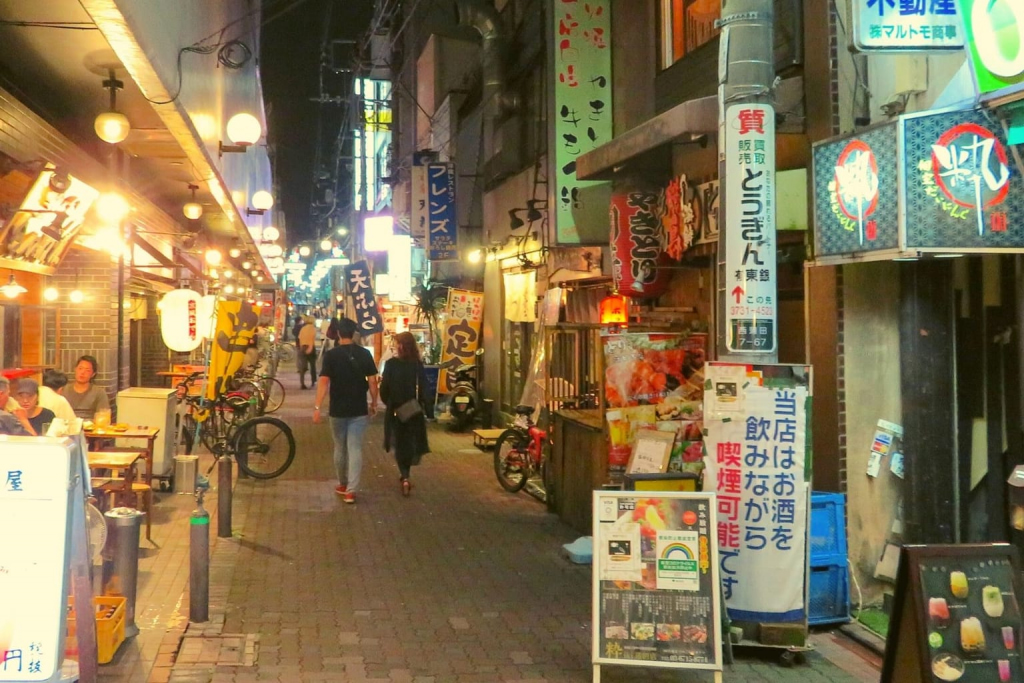This is a two-part article covering Kamata’s shitamachi roots and recent evolution into a multi-ethnic haven. Part II about Kamata’s food is here.
Tokyo’s shitamachi neighborhoods are fun, lively places to visit. They are neighborhoods where Tokyo’s “working class” lives and works, so they exude a down-to-earth atmosphere of shopping, eating and entertainment. One often overlooked shitamachi neighborhood is Kamata, not far from Haneda Airport. This working class neighborhood is also a popular area with Asian and other migrants, resulting in a multi-ethnic shitamachi atmosphere unique, even for Tokyo.
Kamata: A new kind of shitamachi
The term “shitamachi” dates back to the time when Tokyo was known as Edo (1603-1868). Meaning “low town,” the phrase referred to the low-lying riverside areas of the city where the working classes of Japanese society lived and worked.
While Edo shitamachi lay along the banks of the Sumida River, when Japanese National Railways (now JR East) opened a new station at then-rural Kamata near the Tama River in 1904, the cheap, plentiful land soon attracted companies looking for factory sites. Many workers in those factories also found affordable housing in the area. Shops, restaurants and entertainment followed and a new shitamachi was born.
A cozy blend of traditional and modern
Kamata has evolved over the ensuing eleven decades, but that traditional shitamachi feel remains, with several shotengai shopping streets and alleyways of eateries and drinkeries emanating from both sides of JR Kamata Station and stretching all the way to Keikyu Kamata, about 600 meters to the east.
To get the shitamachi feel, start from Keikyu Kamata Station. Asuto is one of Kamata’s many covered shotengai, but with a slightly narrower street that creates a feeling of coziness. Just near the entrance of Asuto, look for Tajimaya, a traditional shitamachi shop selling peanut, bean, and rice cracker snacks. Yoshida-san, the shop’s third-generation owner, bulk buys his stock and then seals the goodies into cellophane packets in his backroom before putting them on sale. Much of Tajimaya’s stock is displayed in traditional wooden cases with glass tops, transporting visitors back in time to the postwar years when the shop was first opened.
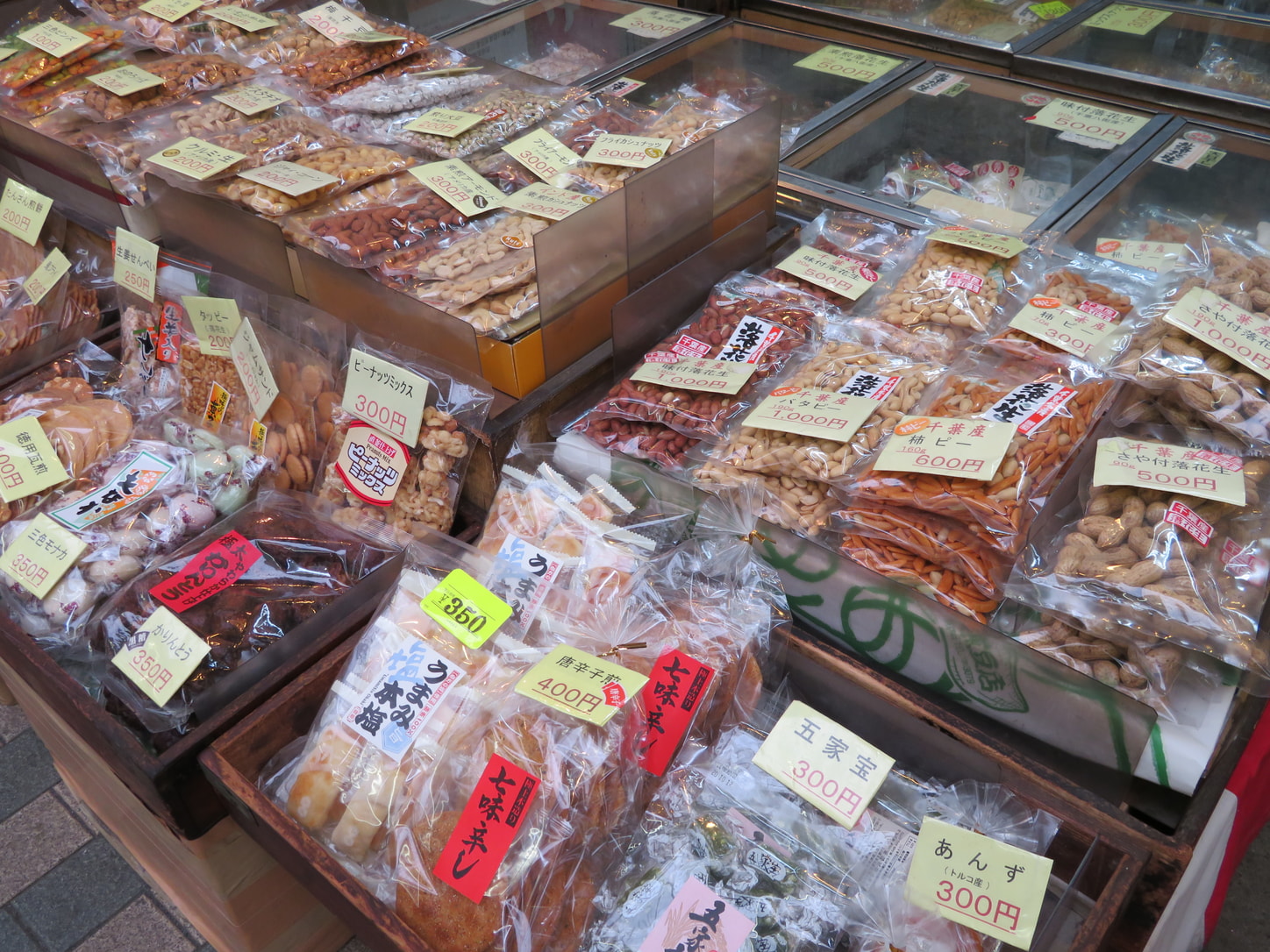
Shopping for snacks at Tajimaya. Photo by Vicki L. Beyer.
As you make your way along Asuto shotengai toward JR Kamata station, you’ll see many such small local shops as well as shops catering to more modern tastes, such as fine wines and mobile phones.
There is a similar mix of traditional and modern closer to JR Kamata station, too. The west side of JR Kamata has major shotengai and more shopping opportunities, as well as bars and restaurants, while the east side of the station has a larger proportion of the latter.
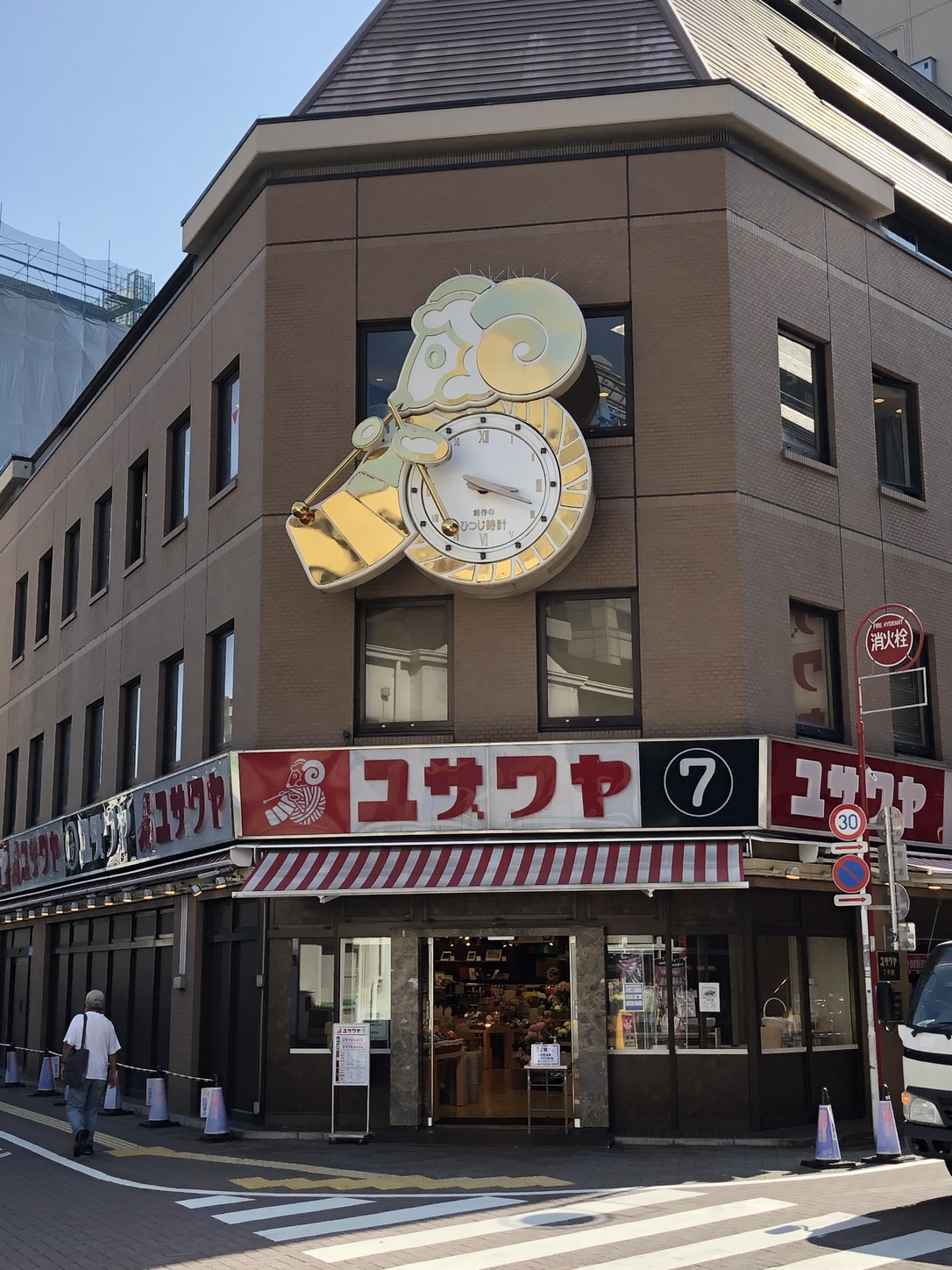
Yuzawaya. Photo by Vicki L. Beyer.
Kamata is the original home of Yuzawaya, a fabric and handicraft store that now operates a chain of 62 retail stores across Japan. The store opened as a small yarn store in Kamata in 1955, an age when frugal working class housewives knitted out of necessity. Thanks to its growth and business expansion, it now occupies several buildings on the station’s west side, selling yarn, fabric, notions and other handicraft items, as well as offering lessons in the use of everything it sells. It is a Kamata institution not to be missed.
Kamata and the movies
It is said that the station’s east side was once home to a number of movie theaters, now all closed. This is especially sad since Kamata was the pre-war location of Japan’s first-ever movie studio. Brothers Shirai Matsujiro and Otani Takejiro bought about 2.5 hectares of land cheaply near Kamata station and built their studio of sound stages, wardrobe and set production facilities, dressing rooms, administrative offices and even a back lot for outdoor shots. They used the first characters of each of their given names, “Matsu” (松 pine), or “Sho” in “Chinese” pronunciation, and “Take” (竹 bamboo), or “Chiku” in “Chinese” pronunciation, to call their new movie venture “Shochiku,” still one of the best-known names in Japanese movie production.
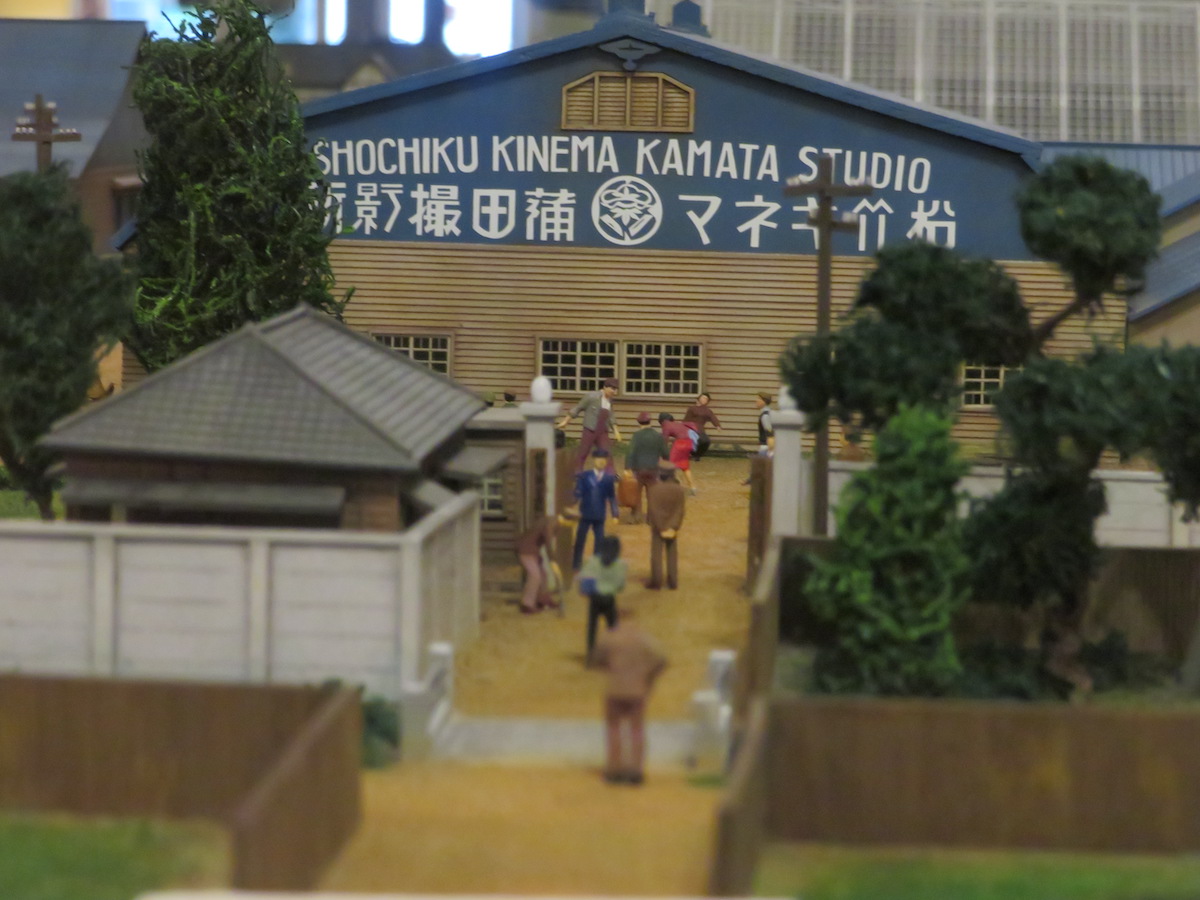
Alas, the studio’s proximity to several factories and the opening of the Tokyo International Airport in Haneda in 1931, meant the neighborhood was too noisy once talking pictures took off and Shochiku closed the Kamata studio in 1936. The site is now the home of Aprico, a public concert hall and performing arts facility. Step to the basement of Aprico to check out the diorama of the Shochiku studio as it looked in the 1920s.
The last Kamata movie theater to close was operated by Shochiku, and it was just around the corner from Aprico. The former theater is now the site of Athlecitta, an activity center offering bowling, batting and billiards. A traditional Japanese wooden marker (oddly concealed behind the staircase near the entrance) commemorates the site’s cinematic origins.
For a “blast from the past” glimpse of 20th-century working class entertainment, take a trip to the roof of the Tokyu Department Store in the station building (enter the elevator from the ground level on the west side of the station). There you’ll find a small amusement park dating back to the 1960s, including a cute little tulip ferris wheel. Apparently, on a clear day, you can see Mt. Fuji from the top. The rooftop park is especially popular among families with small children, but there are activities for adults, too. In the summer months outdoor movies are occasionally screened.
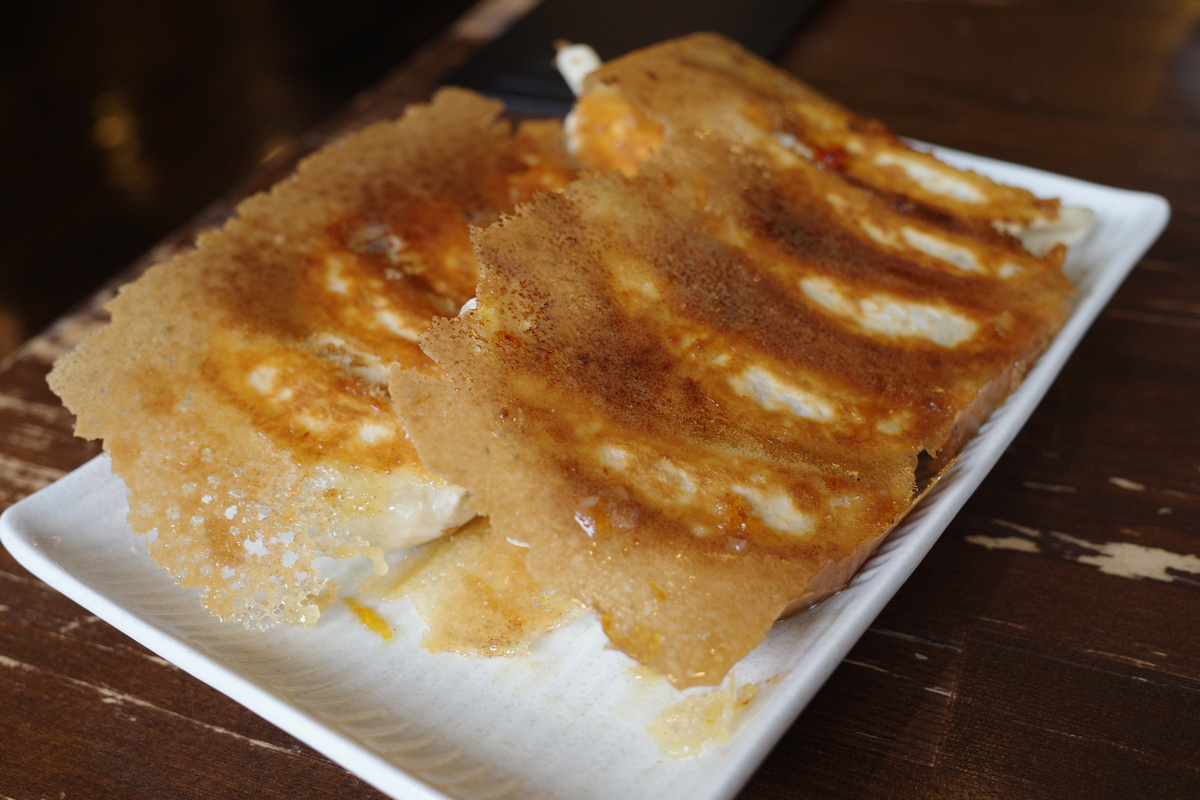 A gyoza town
A gyoza town
Gyoza dumplings and kara-age fried chicken are two dishes Kamata is particularly known for. Visitors have no problem finding tasty versions of both, no matter which side of the station. It is said that Kamata was the birthplace of “gyoza with wings” (Hanetsuki Gyoza), a type of Japanese dumpling pan-fried to crispy perfection.
As such, you will find many restaurants serving the dish around the station and the Asuto shopping street. Popular places, like Nihao, Shunkoen and Konparu are easily spotted by lines forming out the door. Of course, noodle shops and traditional izakaya pubs with all the usual Japanese pub grub are also plentiful.
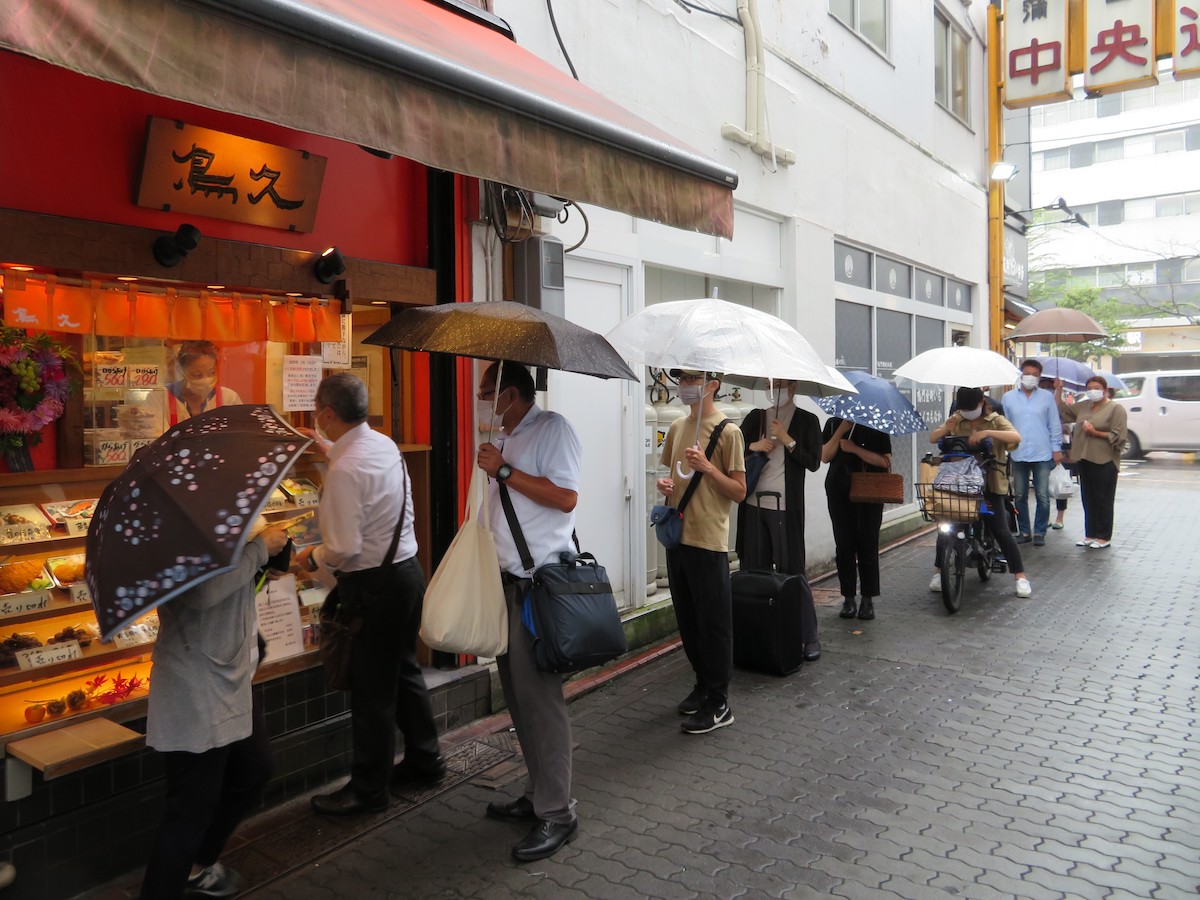
People wait in line to buy the best kara-age in the neighborhood. Photo by Vicki L. Beyer.
One well-known drinking district is Bourbon Road on the west side of the station alongside the Tokyu train line. It has plenty of small and medium-sized bars, often with seating that spills out onto the street. Two larger chains, Hub British Pub and Isomaru Suisan occupy space under the train track.
All of this gives Kamata a delightful shitamachi buzz, but then there is the multi-ethnic element to make the neighborhood even more interesting. This will be covered in Part II, a culinary tour around Kamata.

